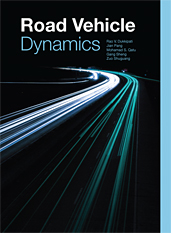Technical Paper
Coordinated Control under Transitional Conditions in Hybrid Braking of Electric Vehicle
2018-10-05
2018-01-1869
In the hybrid brake system of electric vehicle, due to the limitation of the motor braking force when the motor is at high speed and the failure of the regenerative braking force when the motor is at low speed, there are three transitional conditions in hybrid braking: the hydraulic brake system intervenes the braking, the hydraulic brake system withdraws the braking and the regenerative braking force withdraws the braking. Due to the response speed of the hydraulic system is slower than that of the motor, there is a large braking impact (the derivative of braking deceleration) in the transitional conditions of hybrid braking, which deteriorates the smoothness and comfort in braking. Aiming at the impact caused by the poor cooperation between the hydraulic braking force and the motor braking force, a coordinated strategy of double closed-loop feedback and motor force correction is proposed in this paper.


